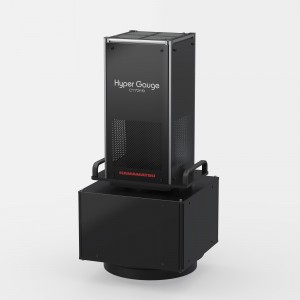
TRUMPF has brought a laser process to industrial maturity that helps reduce the abrasion of brake discs and fine dust emissions. The high-speed laser metal deposition process is a cost-effective additive manufacturing method which employs a laser for repairing or coating. The high-tech company is already testing its use in series production with well-known automotive manufacturers and suppliers.
Laser process reduces particulate matter that is harmful to health
Even very low concentrations of airborne particulate matter are harmful to human health. Approximately half of the particulate emissions in road traffic is due to wear on brakes, tires, clutches, and the road surface, and nearly half of that is brake dust. Brake discs coated by high-speed laser metal deposition emit far less particulate matter than conventional brake discs.
The laser process not only reduces fine dust, but also decreases wear. The market potential is huge. According to the U.S. Department of Transportation, American car manufacturers produced 9.1 million cars in 2021. And to maintain the more than 275.9 million vehicles owned and operated in the United States, drivers often replace their brake discs several times in their vehicle’s lifespan, usually just after 31,000 miles, depending on driving style and wear. In the future, disc brake replacement could be necessary much less frequently.
Electric cars in particular benefit from new process
High-speed laser buildup welding also offers corrosion protection, which is particularly important for the brake discs of electric vehicles. These work primarily with regeneration, i.e., energy recovery, when braking, so the disc brake is rarely used to come to a stop. As a result, these brake discs accumulate flash rust more quickly, which leads to performance losses during braking and, in extreme cases, can necessitate premature replacement.
"U.S. car manufacturers have been using TRUMPF laser systems for decades,” said Henrikki Pantsar, managing director of TRUMPF Inc. Laser Technology in Plymouth, Michigan. “Now manufacturers around the world are using our lasers to produce electric car batteries, and e-motor or high-performance electronics. With high-speed laser metal deposition for brake discs, we offer another manufacturing technology for the series production of future vehicles, especially e-cars.”
Efficient use of energy
The laser cladding principle works through a sophisticated interaction between laser and metal powder, making it possible to create pore- and crack-free layers. The key to the process is the powder and energy input. Instead of applying the metal powder to the component and then melting it there by laser light, in high-speed laser buildup welding, it enters the laser beam above the component. The light heats the powder to melting temperature on its way to the component. This enables brake manufacturers to apply the coating much faster and use the energy employed much more efficiently to form the layer. The process has already received several awards, including the Berthold Leibinger Innovation Award.































 Back to News
Back to News



























